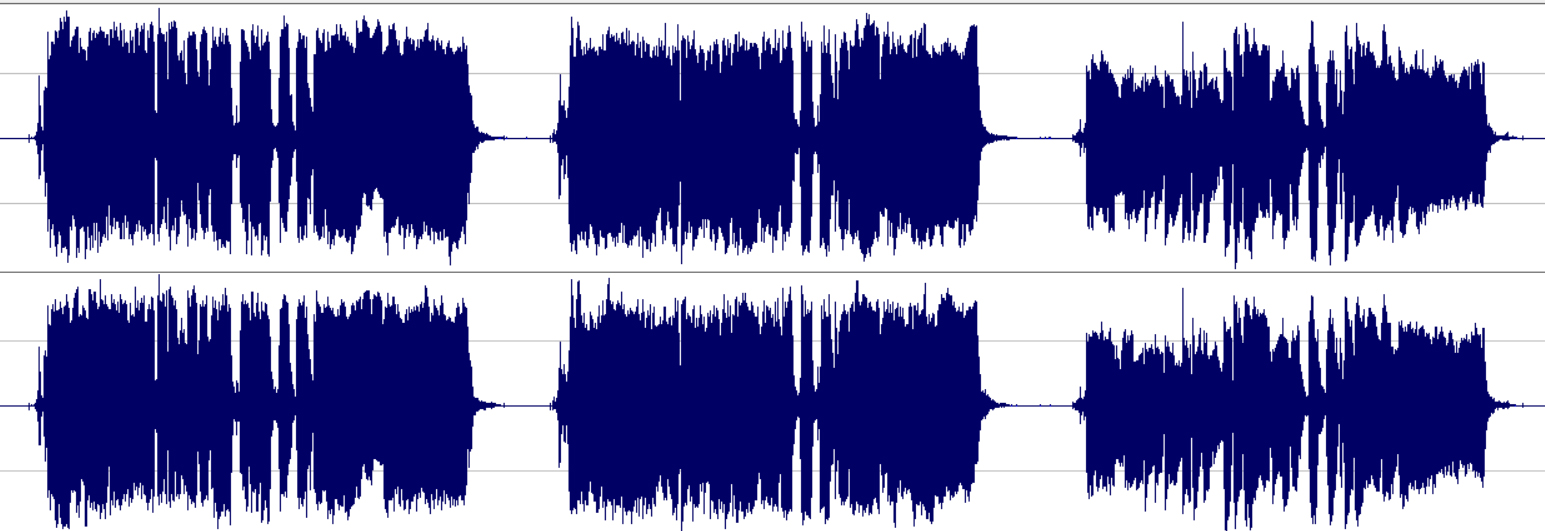That's exactly the difference I notice the most between the amp and the axe.interesting that the Amp is the first one, I thought the end chord was much smoother than it was on the 2nd amp, which is why I assumed the Axe3 was either 1 and 3
1- Competition
2- Real thing
3- Axe Fx
Idk why everyone is hating #3 it sounds more realistic and natural being pushed to the limit
1:III
2:Amp
3:Other thingy
This is also my guess but the first two were close enough that I may be wrong.
Hi,
2 first samples are louder than last oneand Louder = better

Here all 3 with same volume:
After All Yes 1 - best 2 - not bad 3 - sucks (After 4 years with Kemper, more than 80 Amps profiled i know that sound - If Im wrong well then i'm totally noob)
Stay Metal!
Yeah me too.Is it wrong that I kind of like this tone?
Yes its true, but for more "fair" comparison better to listen all samples on same volume level. Anyway i want to say this again 1 guitar track is not a comparison for meThey are normalized, so if one of these is quieter it means the modeler doesn’t compress properly.
If normalization is full scale peak to peak, then there is no way to get the third clip "louder" without inducing digital clipping or introduction of post unit track compression.Yes its true, but for more "fair" comparison better to listen all samples on same volume level. Anyway i want to say this again 1 guitar track is not a comparison for meits a "simple" way to proof that something is "better" than other. Tha's why I use in my own comparisons always one track 4 guitar tracks and full context to showing a diff between sources. Some tracks can sound "better" alone but at the same time they dont fit in a mix, some react better to eq limiters some not. You can check few my comparisons between real amps FX II and Kemper on my website. All with same cab part! becouse its a key when we want compare diff "amps" For example Mesa DR Rev.F 1992 http://www.sinmix.pl/2018/02/09/mesa-dr-rev-f-1992-axe-fx-ii-xl-preset-kemper-profile/
Stay Metal!
I think you're supposing that it's Axe-Fx III compared to a Kemper... I wouldn't be so sure, Cliff said:There is more question IMO.
1. Guitars were recorded or reamped from same source (DI track) ?
2. Kemper can works as a reampbox in profiling mode (fuc... expensive reampbox but works ).
3. If tracks are reamped even via spdif kemper can match volume level so trust me recorded - reamped tracks from real amp and kemper profile are on same volume level.
4. Why tracks are normalized?
5. How looks signal chain?
6. For Axe what IR was used? How made with Axe? Ultrares or standard. With external software?
etc...
Stay Metal!
Amps do crazy things when their virtual power amps and power supplies are pushed to extremes.
...
The equivalent model was chosen on the III and the other product and the respective controls also set to 10.
Nope, not the point, just want to say if the last one is Kemper then its impossible to get after recording that 2 diff volume levels. Becouse again Kemper match volume level in profiling stage, that's why You can compare real signal and kemper profile very quickly just by switching between 2 knobs in kemper. ANd yes I'm not 100% sure that the last one is Kemper but 95%I think you're supposing that it's Axe-Fx III compared to a Kemper... I wouldn't be so sure, Cliff said:
which doesn't make too much sense for Kemper IMHO.
If normalization is full scale peak to peak, then there is no way to get the third clip "louder" without inducing digital clipping or introduction of post unit track compression.
